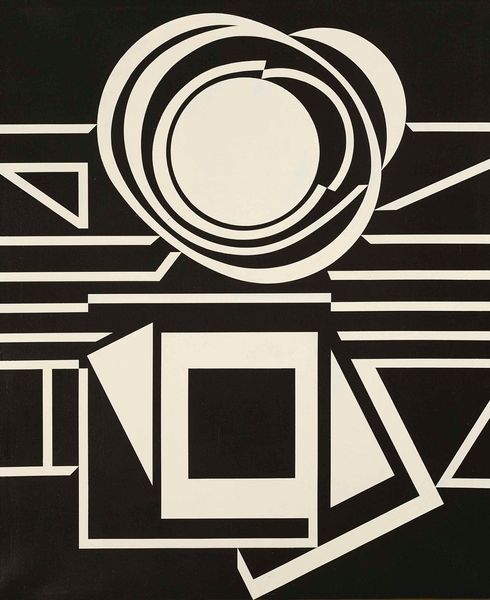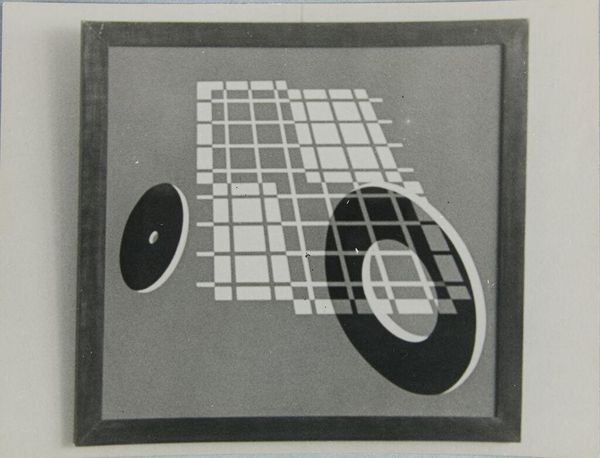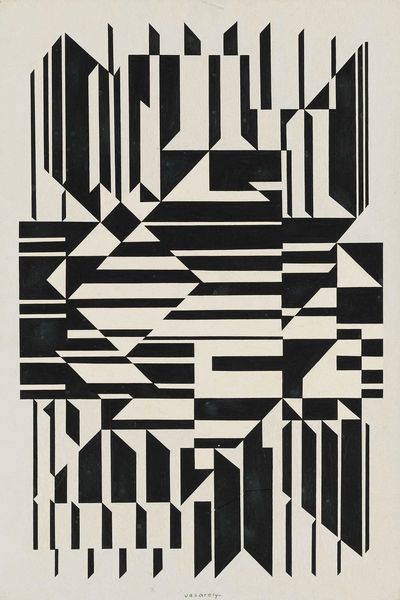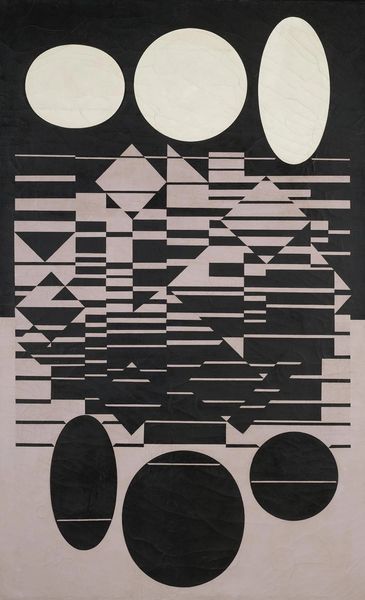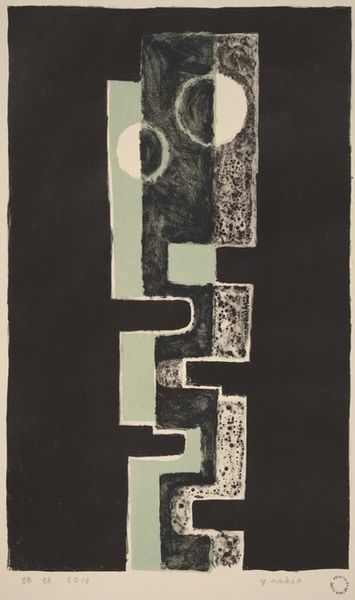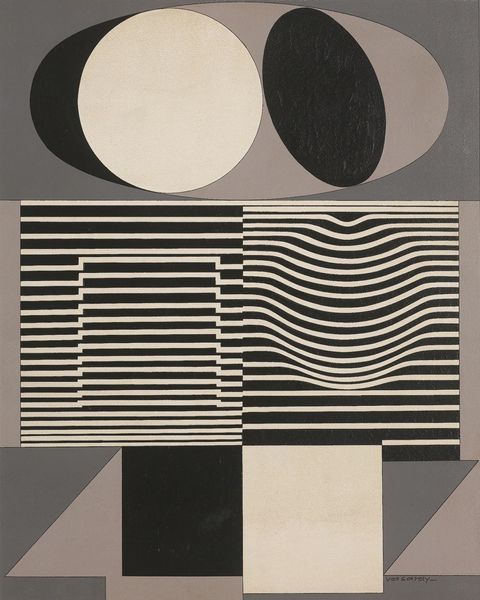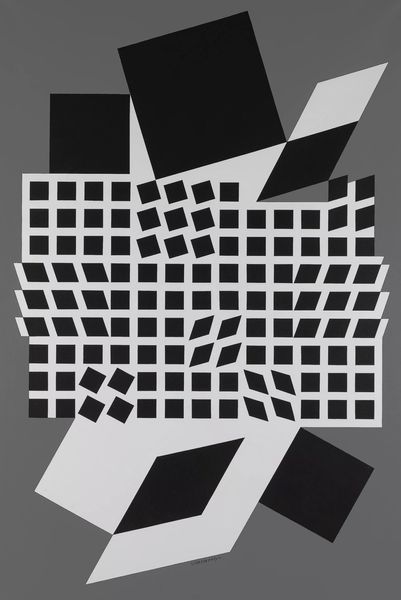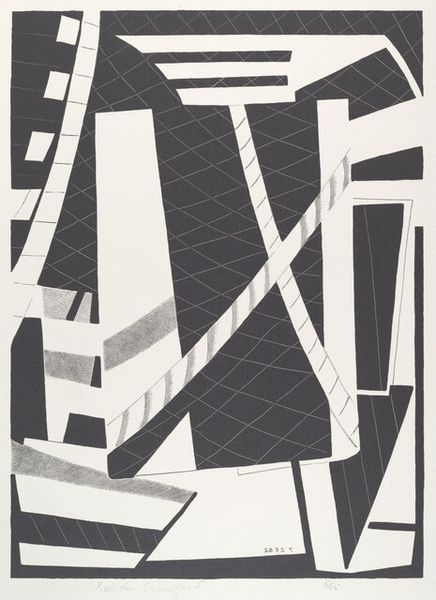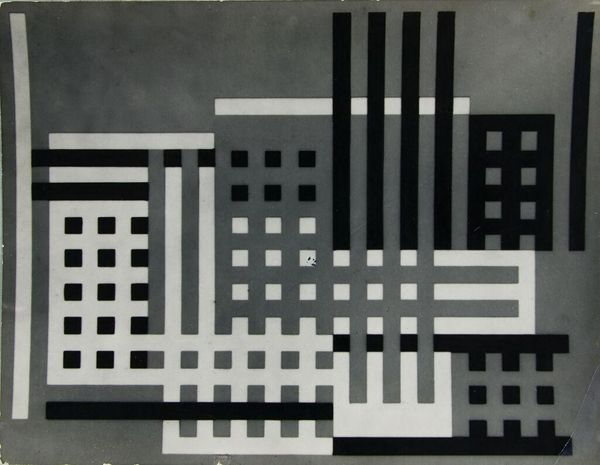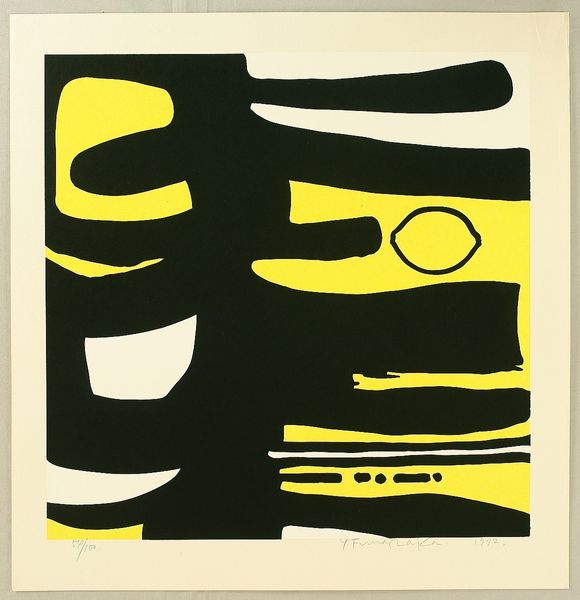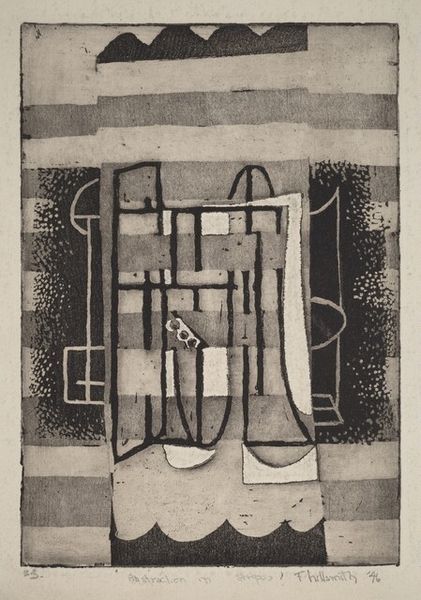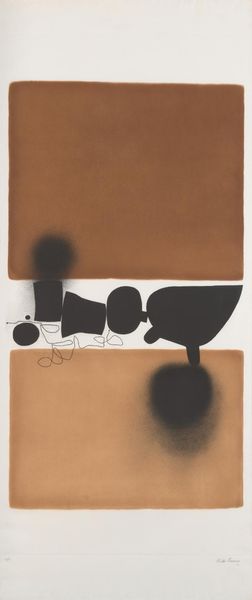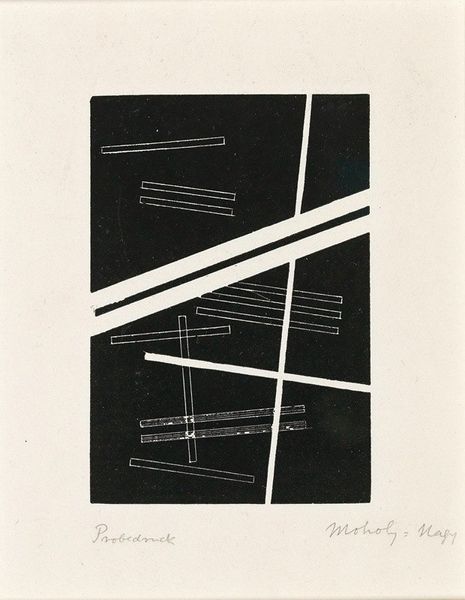
graphic-art
#
graphic-art
#
geometric
#
abstraction
#
bauhaus
Copyright: Josef Albers,Fair Use
Editor: So, here we have Josef Albers' 'Rolling After,' a graphic piece from 1928. The stark black and white geometric shapes against that grey backdrop create a really strong impression; almost unsettling and clinical. What’s your take? What do you see in this piece? Curator: Unsettling...yes! It vibrates, doesn’t it? I find Albers perpetually compelling. He's a magician with space, light, and, in this case, shadow. The grid, usually a symbol of order, is skewed here, almost tumbling forward, while these hard-edged disks add to that dynamism, that sensation of movement. It reminds me of a stage set, all minimalist, pre-digital trickery. Do you get that theatrical feel? Editor: Definitely. It's like the shapes are caught mid-performance, or mid-revolution somehow! Where do you think he got the idea from, though? What do you imagine his influences might be? Curator: Considering Albers was teaching at the Bauhaus, one might look towards functional design principles as well as the burgeoning world of stagecraft for potential inspirations. He was very much driven by optical experimentation. The piece evokes modern architecture and industrial motifs. Editor: It makes me consider the possibilities of abstraction... it does not aim at copying, but somehow alludes. Curator: Indeed! It captures something more than just surface appearance, which in a sense makes it timeless and endlessly engaging. I notice something different every time I look! Editor: Thanks! That’s a really interesting way to frame it. It encourages more experimentation when one steps out and seeks inspiration everywhere.
Comments
No comments
Be the first to comment and join the conversation on the ultimate creative platform.
